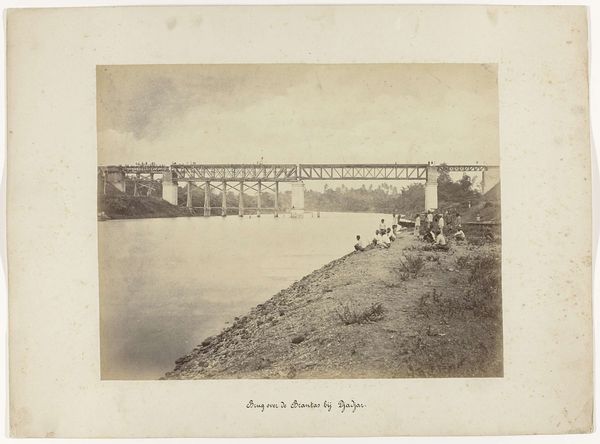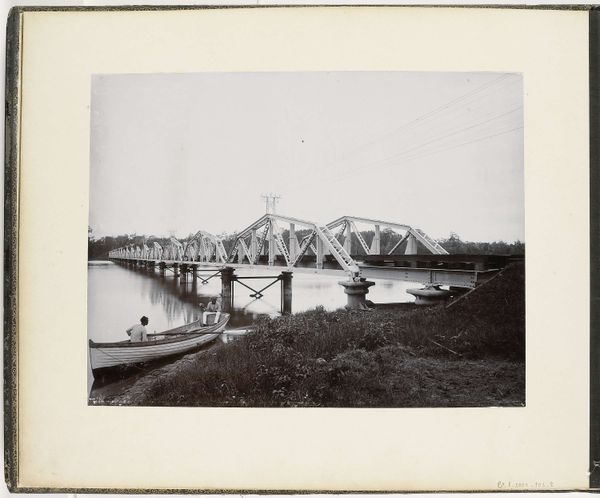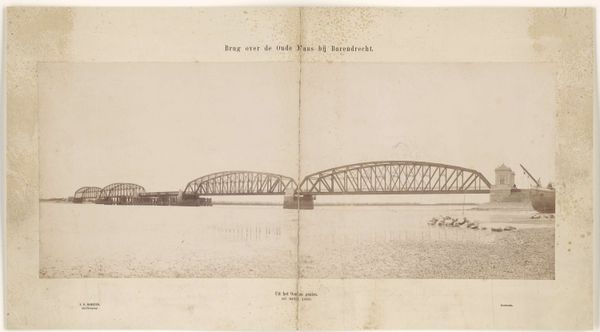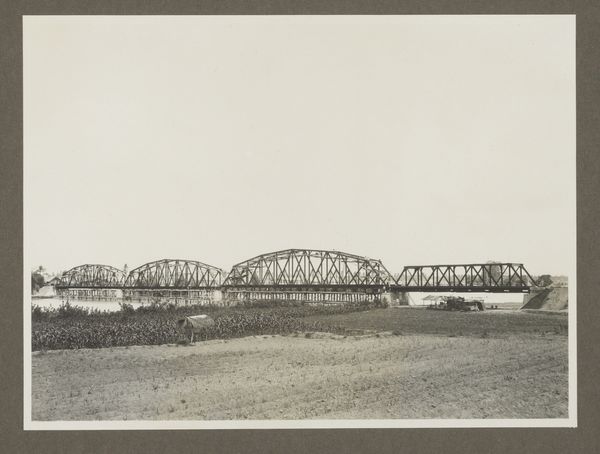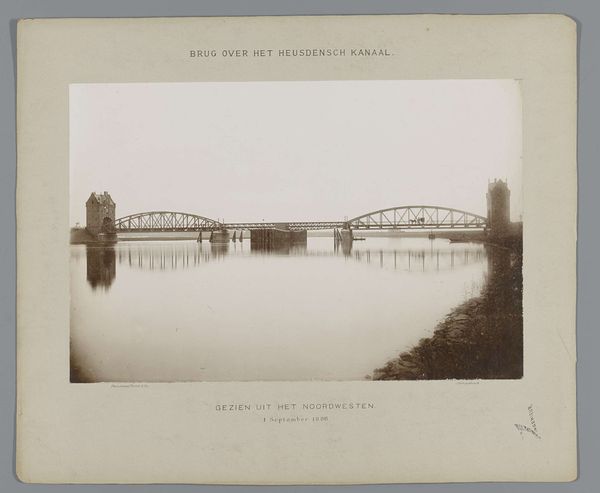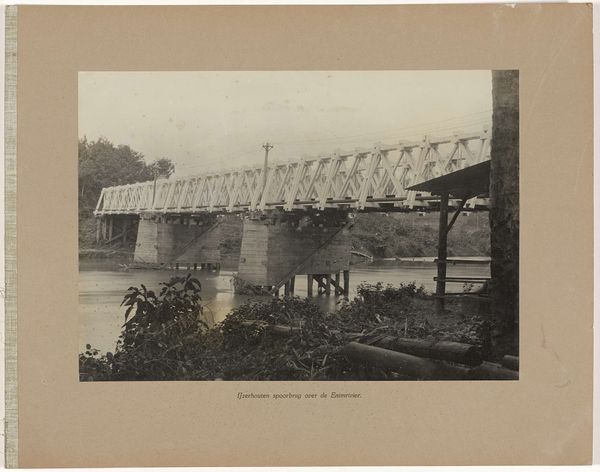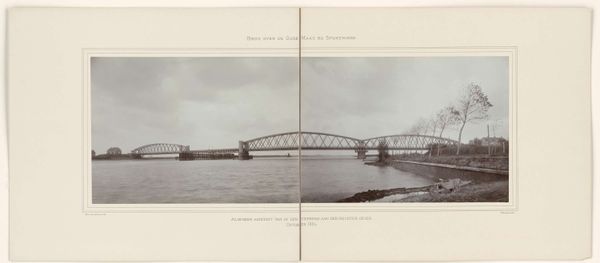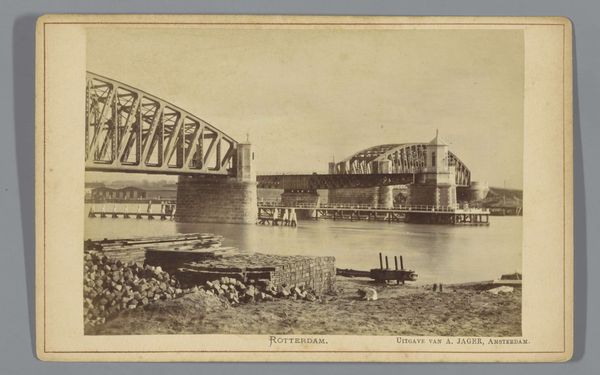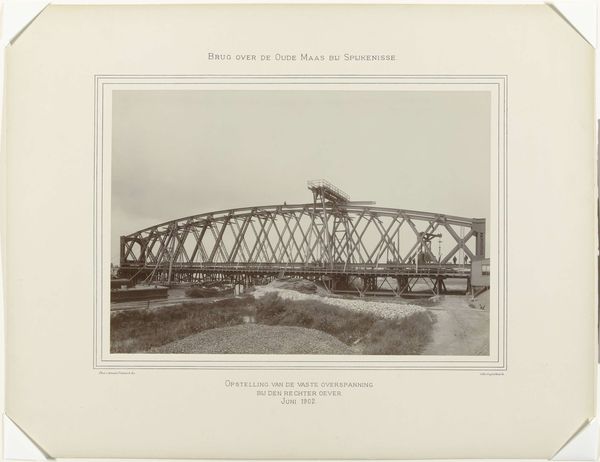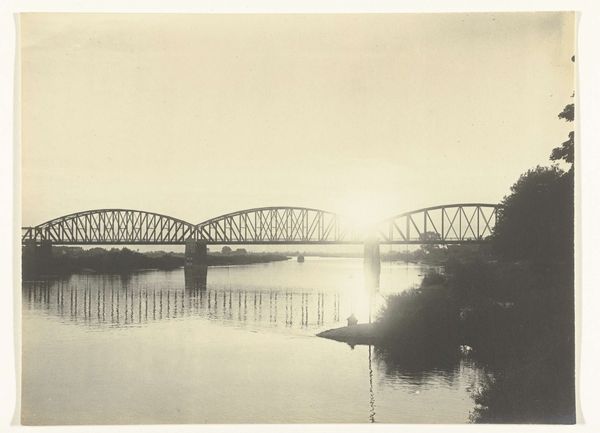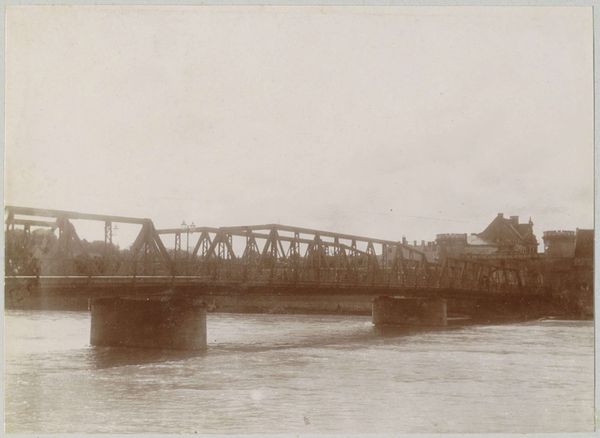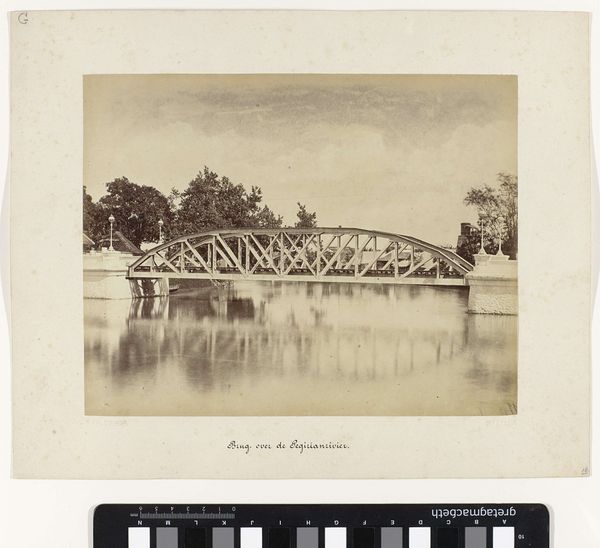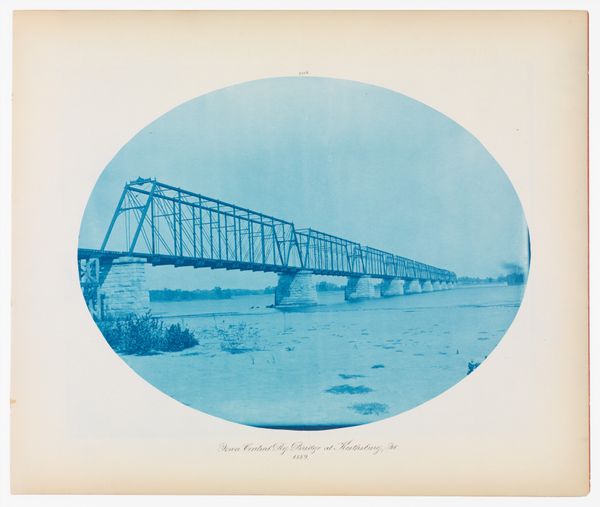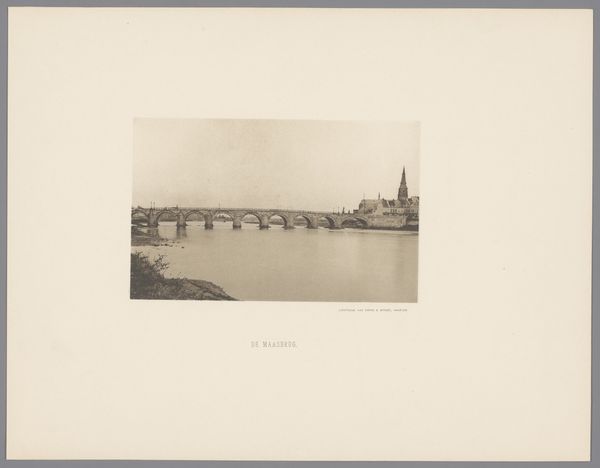
photogram, photography
#
aged paper
#
toned paper
#
photogram
#
photo restoration
#
pictorialism
#
old engraving style
#
landscape
#
photography
Dimensions: height 215 mm, width 275 mm, height 300 mm, width 370 mm
Copyright: Rijks Museum: Open Domain
Editor: Here we have Herman Salzwedel’s "Brug over de Porrongrivier bij Tjepiples," a photograph from sometime between 1880 and 1888. The muted tones give it such a timeless quality. It’s beautiful in a way, but I wonder about the story behind the bridge itself. What strikes you when you look at this photograph? Curator: Well, first, I consider the materiality of photography itself during this period. It was hardly a transparent medium. This image is more than a straightforward record. It represents labor: from the mining of the silver for the photographic emulsion, to the making of the paper. It’s all part of a chain that extends into the photograph itself. Editor: That’s fascinating! So, it's not just about what’s *in* the photograph, but also *how* the photograph came to be? Curator: Precisely! The bridge speaks to industrialization, while the photogram references a unique process for photographic printing, one requiring highly skilled darkroom technicians and costly infrastructure. Someone had to build that bridge, extract the ore, manufacture the equipment... Consider the colonial implications, too. Where were the resources for the photograph and the bridge sourced from, and under what conditions? Editor: So you are saying this photograph offers a way to reflect on how different social, material, and even colonial systems connect with each other through one object? Curator: Exactly. Salzwedel wasn’t simply capturing a bridge, he was participating in, and reflecting, larger systems of production and power. The toned paper reminds us of its age and its status as a carefully crafted object rather than a simple snapshot. Editor: I never thought about a landscape photo in terms of labor and systems before! It gives a whole new weight to the image, understanding how deeply embedded it is. Curator: Indeed, considering the materials, production and social contexts is essential for a deeper understanding of art’s role within a culture.
Comments
No comments
Be the first to comment and join the conversation on the ultimate creative platform.
